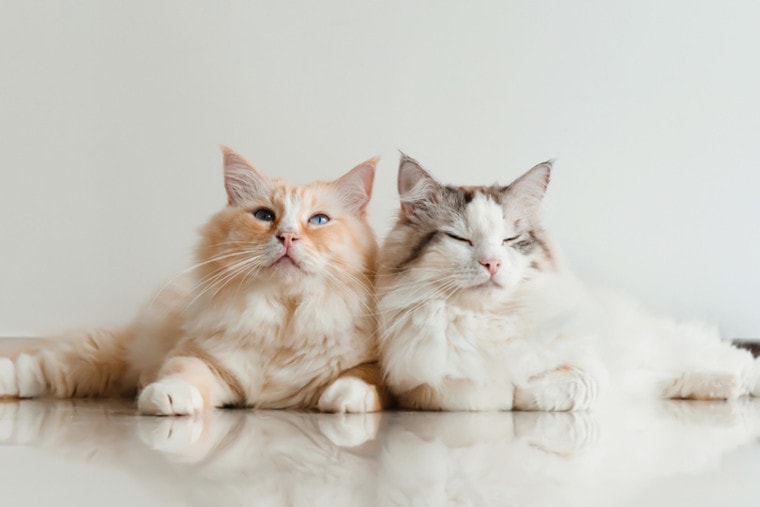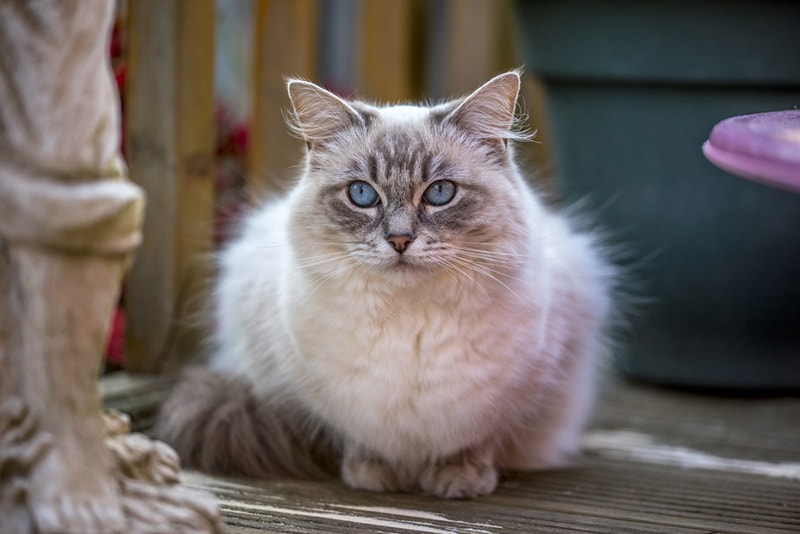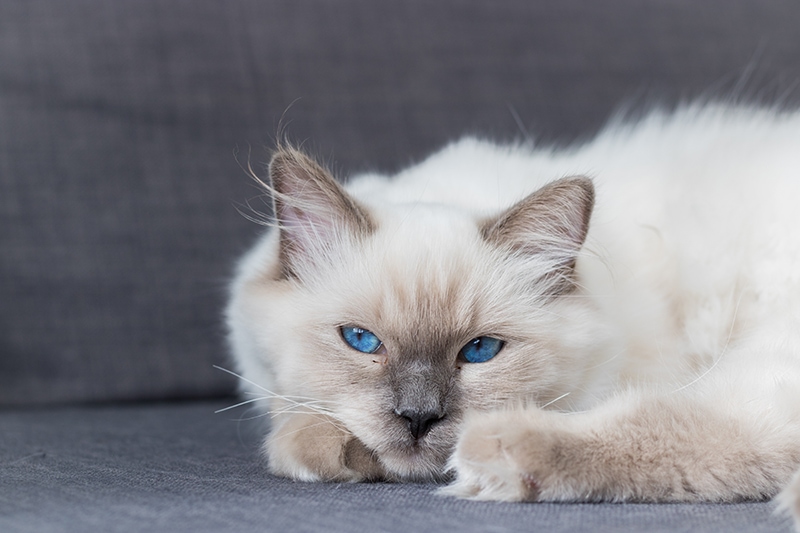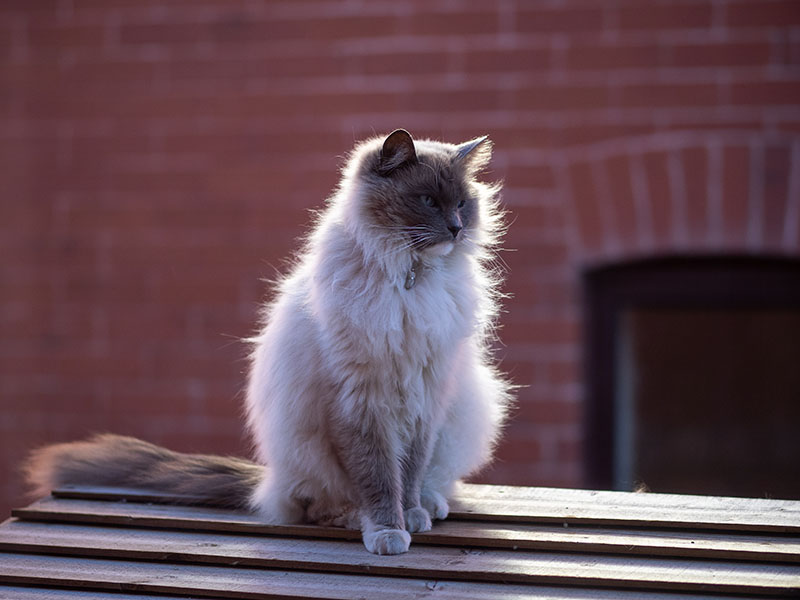
Click to Skip Ahead
Ragdolls are some of the most beloved cats in the world. Their sweet faces, soft fur, and loving temperaments have allowed them to stay in the top rankings for the most popular cat in the US for many years, and they often grow large enough to turn heads. But just how big do Ragdolls get? We delved into the question and have produced an average growth chart for your Ragdoll kitten, so you can see how big your furry friend will grow.
Ragdoll Breed Overview
From a historical standpoint, Ragdolls are an interesting breed. They originated in the 1960s, with most of the breeding being monopolized by just one woman: Ann Baker. She trademarked the Ragdoll name and started a franchise to set up the breed and ensure her name was firmly stamped onto it.
Thankfully, the Ragdoll managed to break free and became honed into the loving, laid-back cats we know today. The cat was named “Ragdoll” because of its calm and relaxed temperament and tendency to relax so much that it goes “floppy” in its owner’s arms.

Ragdoll Size & Growth Chart
The Ragdoll can differ in size depending on sex. Males are typically the larger of the two. Like most kittens, Ragdolls follow a similar growth trajectory; kittens will typically put on approximately 3 ½ ounces in weight per week for the first 4 months. Remember that kittens grow in spurts, so your Ragdoll may not fit these ranges precisely.
| Age | Weight Range | Length Range |
| 1 Week | 7– 8 oz | 5–8 inches |
| 2 Weeks | 10–12 oz | 7–9 inches |
| 4 Weeks | 17–18oz | 8–10 inches |
| 8 Weeks | 1.5– 2.5 lbs | 9–12 inches |
| Six Months | >6 lbs | 12–16 inches |
| 1 Year | 8-15 lbs | 14–18 inches |
| 2 Years | 11–16 lbs | 16–20 inches |
| 4 years | 12–21 lbs | 17–26 inches |
When Does a Ragdoll Stop Growing?
Ragdolls do most of their growing up until approximately 18 months of age but often don’t fully mature until they’re 3 to 4 years old. So expect some “filling out” and minor length growth until their fourth birthday. This won’t be true for all Ragdolls, as they famously grow in fits and starts; you may find that your Ragdoll reaches their final weight and height at different times or stops earlier or later than expected. Remember that any Ragdoll can grow heavier beyond this age, but excess weight is never a good thing for your cat, and they should be kept within healthy weight ranges and body condition scores.

Factors Affecting the Size of Ragdoll
A few factors can influence the size your Ragdoll eventually grows to. Nutrition as a kitten and juvenile plays a big part in growth and development. Kitten food has more calories and higher levels of protein, fat and calcium, and phosphorus to support healthy growth and development. If kittens are not fed a balanced diet and do not receive adequate amounts of essential nutrients including protein, vitamins, and minerals they can have stunted growth.
Genetics also factors in, and some Ragdolls will inherit a larger or smaller size from their parents. Nineteen pairs of chromosomes influence factors such as sex, color, and size in cats. As with all animals, larger parents are more likely to produce larger offspring, and smaller cats make smaller kittens.
Genetic abnormalities and mutations can also influence cat growth, such as pituitary dwarfism. Pituitary dwarfism is caused by a deficiency of growth hormones produced by the pituitary gland.
Lastly, neutering can affect the eventual size of your Ragdoll. Neutered cats will need a reduced calorie intake because of the metabolic changes it brings, but not all cats will gain weight. However, cats that are neutered “early” (around 7 weeks of age) may grow taller than their un-neutered siblings due to a delay in the closure of bone growth plates.
Ideal Diet for Maintaining a Healthy Weight
The ideal diet for maintaining a healthy weight will be completely balanced, offering everything your Ragdoll needs to thrive. Cat food that’s high in meat-based protein is good since cats are obligate carnivores and need amino acids called Taurine and Arginine in their diet which can only be found in animal protein. Reach out to your vet for help in choosing the right diet for your Ragdoll.
Feeding according to manufacturer guidelines is also ideal, as overfeeding or ‘ad-lib’ feeding and allowing your cat to eat what it wants can result in obesity. Because wild cats hunt, they expend lots of energy finding food and eat little and often. In the home, this can mean your Ragdoll visits the food bowl regularly with little energy expenditure, resulting in weight gain.
Using puzzle feeders can increase physical and mental stimulation.
Ragdolls are predisposed to obesity, which can strain their joints, heart, and other organs, and keeping them at a healthy weight is essential to avoid early mortality. Keeping treats to a minimum and adjusting the amount fed daily can also keep weight down since many treats are calorie-dense and not nutritious.

How to Measure Your Ragdoll
Measuring the length and height of your Ragdoll is as simple as picking up a measuring tape! To measure the height, measure them from their paws (make sure all four feet are on the ground) up to the nape of their neck, stopping just before you reach the base of their skull. For length, measure from the tip of the nose to the base of the tail.
To weigh your pet, you could take them to your veterinarian or pick them up and stand on the scale with them. Record the weight, then stand on it on your own and subtract the figure from the original. However, using a pet-specific scale is the most accurate way to weigh your cat.
Conclusion
Ragdolls are one of the world’s most beautiful and largest domestic cat breeds and are beloved for their calm temperament. Although Ragdolls will do most of their growing in their first few years, they can take up to 4 years to mature physically. If you’re concerned about your Ragdolls size at any point, you should contact your vet. Remember that each cat is different, and some will be bigger or smaller than others.
Featured Image Credit: xixicatphotos, Shutterstock







